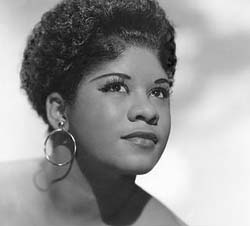Ruth Brown, Rhythm and Blues Pioneer 1928-2006

"She was one of the original divas....she set the standard for sass, heartache and resilience in her life as well as her music, and fought tirelessly for royalty reform and recognition for the R&B pioneers who never got their due. She taught me more than anyone about survival, heart and class. She was my dear friend and I will miss her terribly."- Bonnie Raitt, friend and fellow musical artistHere's Clark Dark with a report on the life of Ruth Brown, entertainer, musical artist, and activist. The world of music, in particular musicians of the genre known as R&B, Rhythm and Blues, was saddened when news of the death of one of the industry's great talents was received.
Ruth Brown was known by many names. "Miss Rhythm & Blues, "The Girl with a Tear in her Voice", and "The Original Queen of Rhythm & Blues," passed away in a hospital in the Las Vegas, Nevada area, from complications following a heart attack and stroke earlier in the week. She died on November 17, 2006. She was 78.

Ms Brown was fortunate to have many hit recordings, including, "(Mama) He Treats Your Daughter Mean", "5-10-15 Hours" and "Teardrops From My Eyes". The latter was a mega-hit for Brown while under contract with Atlantic Records in the 1950s.
 Despite being one of the most popular and best-selling perfomers during the era of segregation, many of Brown's songs were covered by white singers, such as Patti Page, (the singin' rage) and Georgia Gibbs, in more sedate versions that became popular hits.
Despite being one of the most popular and best-selling perfomers during the era of segregation, many of Brown's songs were covered by white singers, such as Patti Page, (the singin' rage) and Georgia Gibbs, in more sedate versions that became popular hits.Next Post: Ruth Brown is Rhythm and Blues
Visit Our Forum: Tell Us What You Think! READ MORE! CONTINUES HERE!










